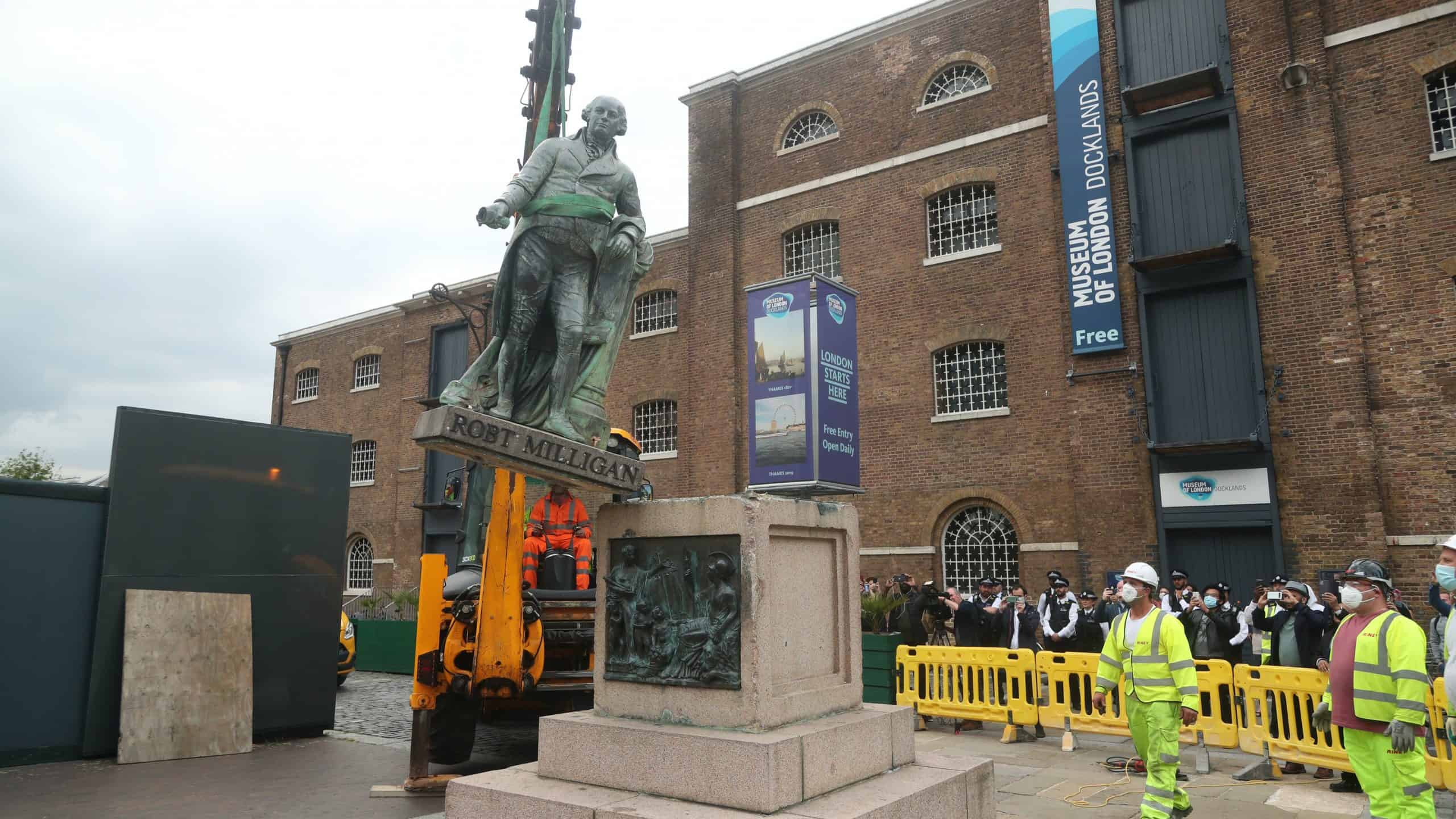
By Phil Smith
The removal of Edward Colston’s statue in Bristol during the BLM protest on the 7th June has ignited national discourse surrounding the protection or removal of statues of public figures in Britain.
Although Colston was responsible for the death of thousands of slaves, many have voiced their outrage at the toppling of the statue of this well-known slave trader. Far-right protests led by Stephen Yaxley-Lennon (Tommy Robinson) are set to occur this weekend to ‘defend’ other statues. The Prime Minister himself has spoken against the removal of these figures arguing that “we cannot try to edit or censor our past”.
Contrary to the rhetoric of those protecting outdated landmarks, the removal of these statues seems to be raising a discussion surrounding history, not suppressing it. A petition, created to teach British colonialism in schools, has now got over 124,000 signatures. Removing such statues and placing them in museums does not erase the past: people can educate themselves on British history or historical figures without celebrating them in public and we should be learning about Britain’s past at school. Hopefully, this movement will bring to public attention the lack of historic education and ensure that future generations are more aware of the horrors of the British empire and the slave trade. Along with Colston, figures like Robert Baden-Powell (whose statue has also sparked discussion) held some hideous views. Not only was he a proud homophobe, but also believed that Mein Kampf was a “wonderful book“. Most Britons undoubtably would agree that these views have no place in today’s world, so why are some protecting his image?
The irony is that those who claim that the removal of statues is editing history, also cherry pick their versions of the past to suit their own agendas. Celebrating these figures is an active choice to ignore much of what they stood for.
Some have argued that these figures were ‘of their time’ and that views and practices such as slavery or racism were so ingrained as to be normal, everyday attitudes. While this is true for many of the historic figures that we immortalise and commemorate with statues, we should be able to assess the relevance of that person’s legacy today. A public statue should inspire and promote positivity, not immortalise outdated, intolerant attitudes.
It is true that figures like Colston did contribute significantly to charity: he helped to build schools and hospitals, an admirable act by the standards of any era. Yet, should we build a statue of Jimmy Savile to commemorate his charity work? Absolutely not. Colston may have helped to build infrastructure but that does not excuse his part in the slave trade and therefore he should not be celebrated with a public statue. He and those like him should have their statues removed and placed in museums, where they should be set into a historic context. Their outdated, racist attitudes and beliefs should enter the history books, along with their statues.
Some may still say, if we hold statues to today’s standards, many hundreds will be removed. This is true. Instead of immortalising individuals of great wealth and power we should celebrate working class heroes like Danuta Danielsson whose statue in Växjö, Sweden depicts her heroically standing up to thuggish Neo-Nazis. We should be proud to celebrate those who fight for liberation and freedom while rejecting those who repress and enslave.